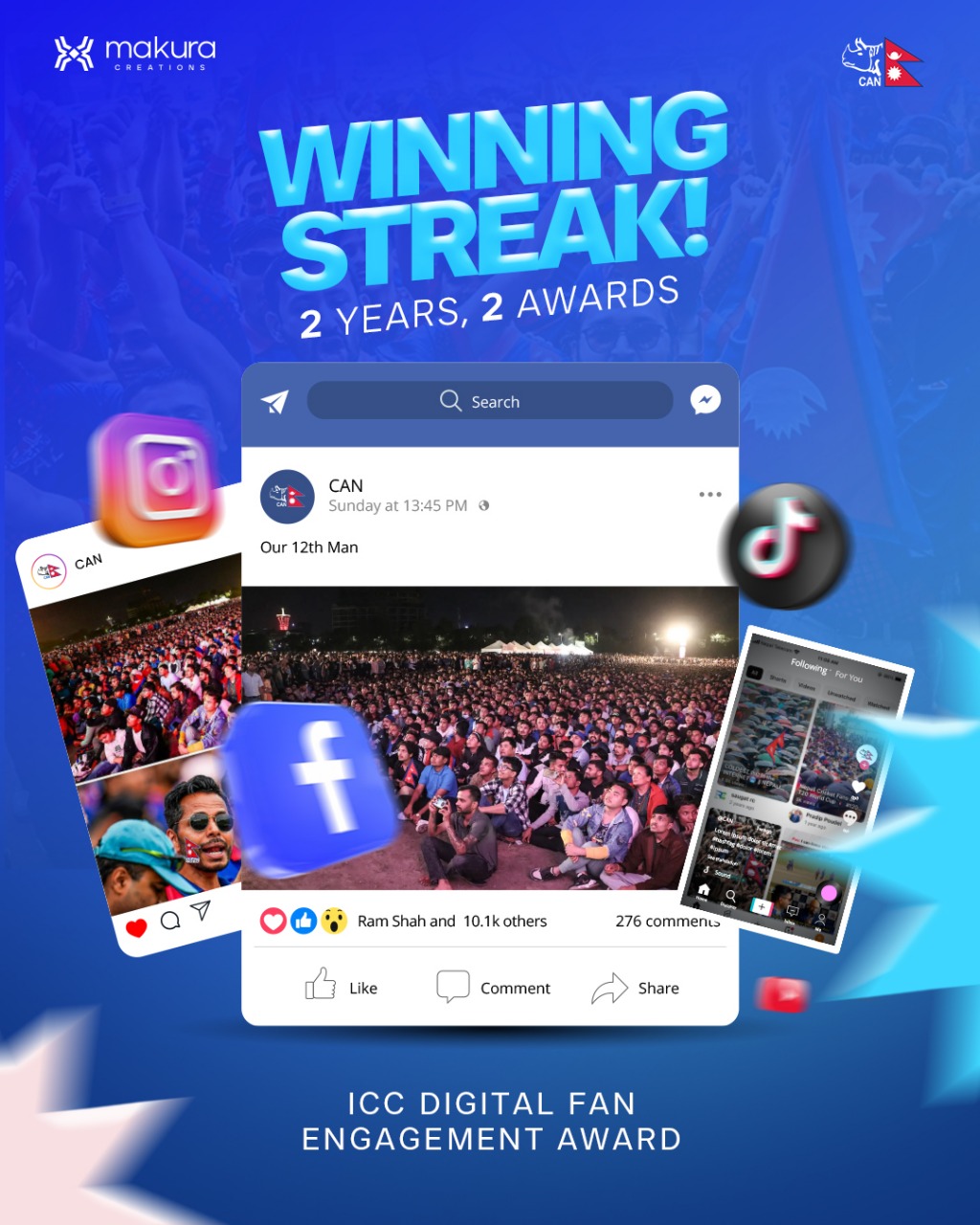In the digital world, where usability often defines success, having a functional app or website is no longer sufficient. For an organization like the Cricket Association of Nepal (CAN), which represents a passionate cricket community, its digital presence is its global face. Initially, CAN’s digital assets were plagued with technical inefficiencies, aesthetic inconsistencies, and a general lack of user engagement. The transformation of these platforms was not a mere cosmetic upgrade but a systematic overhaul grounded in usability testing and data-driven design.
This case study explores how usability testing and a deep understanding of user experience (UX) principles turned a fragmented and underperforming platform into a modern, engaging, and scalable digital ecosystem.
Understanding the Baseline
When assessing CAN’s initial website and app, several foundational issues emerged. The website had minimal functionality—information was outdated, loading times were painfully slow, and the overall navigation was convoluted. On the app side, design inconsistencies and frequent crashes made it nearly unusable. Technically, both platforms lacked optimization, with uncompressed assets, unstructured codebases, and an absence of adaptive design.
This state of affairs created a chasm between CAN’s goals of engaging cricket fans and the actual user experience. To bridge this gap, a methodical approach was essential, starting with usability testing to identify user pain points and prioritize solutions.
Deploying Usability Testing
The first step in this transformation involved thorough usability testing to uncover both overt and subtle flaws. The testing process was iterative and spanned multiple techniques:
1. Task-Based User Scenarios Fans were asked to complete tasks such as finding player statistics, viewing match schedules, and booking tickets. Task completion rates were abysmally low, and time-on-task metrics highlighted inefficiencies in navigation.
2. Heatmaps and Click Tracking Analytical tools captured user interactions on the website, revealing confusion over the placement of critical features. For instance, the live score section was buried within submenus, making it hard to locate during matches.
3. Performance Analysis Load testing showed that the website could not handle even moderate traffic spikes. A lack of caching mechanisms and heavy server-side operations led to frequent downtime during high-profile matches.
4. User Feedback Surveys Fans frequently cited frustrations with outdated aesthetics, inconsistent branding, and the lack of a seamless mobile experience.
These findings provided the foundation for a roadmap that prioritized user-centric redesign, technical optimization, and performance scalability.
The UX and Development Overhaul
Navigation Redesign
One of the critical pain points was the lack of intuitive navigation. By analyzing user behavior, we restructured the navigation system to align with user mental models. For example, popular features like match schedules and live scores were moved to the homepage. This restructuring was informed by card sorting exercises, which provided insights into how users categorized and prioritized content.
Improved Aesthetics and Branding
Consistency was lacking in the initial design, with clashing colors and fonts that diluted the brand identity. A comprehensive style guide was created to ensure alignment with CAN’s vision. Key visual elements—like typography inspired by cricket scoreboards and a color palette reflecting the Nepali flag—were integrated to create a cohesive and appealing interface.
Performance Optimization
Technical improvements were pivotal. By implementing asynchronous loading and integrating a content delivery network (CDN), we reduced page load times by over 60%. Lazy loading of images and compression algorithms ensured the platform could handle high traffic volumes without degradation in performance.
Iterative Testing and Refinement
The redesigned platform underwent multiple cycles of usability testing to validate improvements:
1. Real-World Load Simulations Using AI-based load testing tools, we simulated traffic patterns for high-profile events, ensuring the platform could scale to meet demand.
2. A/B Testing Multiple iterations of the homepage layout were tested to determine optimal placements for features like live scores and news updates. Engagement metrics validated these changes.
3. Quality Assurance and Load Balancing with JMeter Load testing with Apache JMeter provided detailed insights into server behavior under heavy traffic. By simulating thousands of concurrent users, bottlenecks in the server infrastructure were identified and addressed. Load balancers were deployed to distribute traffic evenly across multiple servers, ensuring uninterrupted service during peak times.
Visual Representation of Results
Below are two visual representations to illustrate the transformation:
- Screenshot Comparison: The first image showcases the cluttered and inefficient initial design, while the second highlights the clean, modern interface of the revamped platform.

- Heatmap Insights: A heatmap from early usability testing reveals scattered user clicks, indicating confusion. In contrast, post-redesign heatmaps show focused interaction with key features.
Case Study: Handling Real-Time Traffic During a High-Stakes Match
During a highly anticipated Nepal vs. UAE cricket match, the platform faced unprecedented traffic. The redesigned system’s architecture—leveraging auto-scaling cloud servers and optimized APIs—ensured uninterrupted service. Fans accessed live scores, player stats, and commentary without delays, showcasing the robustness of the redesign. Engagement metrics showed a 300% increase in active users compared to previous matches, underscoring the success of the overhaul.
Conclusion
The transformation of CAN’s digital presence illustrates the power of usability testing and UX-focused design. This wasn’t merely a technical upgrade; it was a holistic approach to understanding user needs, anticipating challenges, and delivering a seamless experience. The result is a platform that not only represents the passion of Nepali cricket but also sets a benchmark for sports organizations in the digital era.
This journey is a reminder that great code alone is not enough. True success lies in creating digital experiences that resonate with users, driving both engagement and organizational goals.


